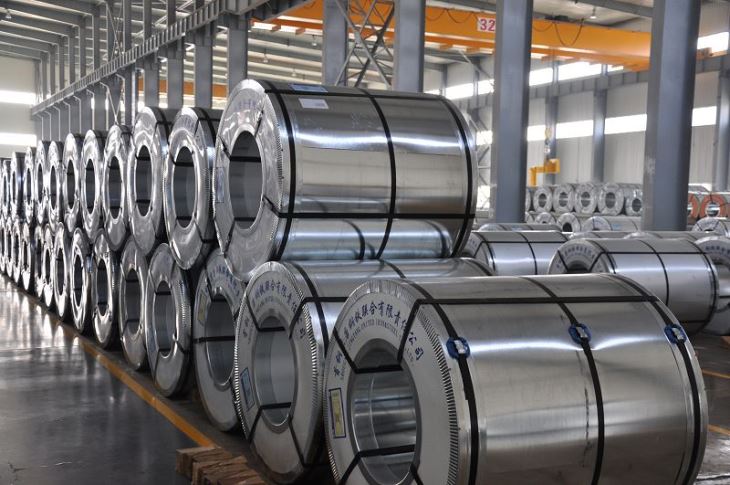Russia’s Ministry of Finance and the Bank of Russia said Feb. 28 they are requesting Russian exporting companies to sell 80% of their foreign currency revenue to the state in exchange for rubles. Additionally, Russia’s central bank hiked its key rate to 20%, up from 9.5% previously, to prevent hyperinflation. The moves will leave companies with greatly depreciated rubles, while making loans astronomically expensive.
On Feb. 28, the ruble crashed to a record low of 120 and 107 per Euro and dollar.
By obliging exporters, including metal producers, to convert the majority of their foreign currency into rubles, the government undermines their potential to import goods and services – from equipment components to foreign machinery – while the 20%+ interest rate effectively makes borrowing from Russian banks impossible, according to analysts.
In 2021, foreign currency made up 40% of Russian steelmaker Severstal’s revenue and 60% of that of its peer company MMK.
Major Russian steel producers have performed very successfully in recent months. MMK announced on Feb. 28 its 2021 EBITDA more than doubled year on year to $4.3 billion, providing $3.1 billion net profit. Previously, record high earnings were posted by Severstal and Evraz.
Major companies’ outstanding profits, cash flows and lower debt levels in 2021 (below 0.1 x EBITDA for MMK and 0.5x for Severstal and Evraz) should enable them to meet their liabilities this year and fulfil their investment plans, possibly without extra borrowings. However, for small non-integrated steelmakers and standalone EAF mills, the new reality means a race for survival.
Debt relief
Sources believe the government will support significant job providers, which most steel mills are.
The government is likely to step in to request banks to either write off debts or provide extensive repayment holidays to mills. Alternatively, the government might buy these mills’ debts, if not nationalize them, according to a source at one mill.
In 2021, Russia made 76 million mt of steel with roughly 40 million mt of this exported. With the financial strain of the sanctions already in place and those being negotiated, and with the Black Sea spot trade already having slowed, it is unclear whether it can achieve the same total again this year.
Russian steelmakers are in a wait and see mode. They may sustain production for a month or two, but if exports to Europe do not recover or if they are unable to fully offset losses in European markets with larger sales elsewhere, production cuts may be necessary, according to an industry source.
Apprehending output decline
EAF furnaces might be simply suspended, the source said. BF-BOF production lines may be slowed down via stoppages for planned maintenance or extended furnace repairs.
Steel producers may also be motivated to revisit the excise duty for liquid steel the government introduced in January. They may request this duty be levied on sales, not on production, according to the source.
While the Russia-Ukraine conflict is taking its toll on companies’ exports, affecting revenue, production may remain unchanged for some time, upholding duty liabilities. These are also being boosted by the sharp ruble depreciation, as the excise formula hinges on currency exchange rates.
Making the forex rate fixed could be justified too, although there is a general understanding that abolition of the excise won’t be under discussion, one analyst reckons.
A source at one of the steel mills told S&P Global Platts the company is too busy fulfilling contracts and keeping business afloat to think of the excise at this very moment. A spokesperson for Russian steelmakers’ association Russkaya Stal said there have been no requests on the association’s behalf to downsize the fiscal load on the industry.
Buyers’ attitude a challenge
SWIFT is working fine for country’s major lender Sber and a few other banks. Russian steel producers have diversified accounts to overcome the issue of several banks being under sanctions, according to the mill source.
It’s possible to ship steel, and the very cautious attitude of customers who are avoiding long contracts with Russia is potentially more problematic than banking or logistics problems, said the source. Work with clients has come to the fore, the source said.
Finance schemes adjusted
Russian steel producers are giving their full attention to leveraging the financial risks they face due to sanctions and interest rate hikes, noted a Moscow-based trader. “Most people, including foreign customers, understand that business in Russia stays out of politics. This is not the first crisis Russian steelmakers have to deal with, and they will be alright in the end,” the trader said.
Mills are not offering steel even in the Russian market, with new quotations expected to be formulated only by March 9. “When so much is going on and every day, if not every hour changes your vision of the immediate future, it’s better to take a pause and let it all settle down to spare a few mistakes,” the trader said.
The senior management of MMK said the company is not experiencing problems with liquidity and cash flows, although some adjustments are taking place.
MMK’s shipments are keeping up with the schedule with MMK’s Magnitogorsk Iron and Steel Works having sold out its March production and its April order book being half full, MMK CEO Pavel Shilyaev said during a Feb. 28 call with analysts.
Industry observers fear there might be cuts to capex plans this year, although some steelmakers say they are adhering to initial plans for now. MMK has earmarked $1.25 billion in capital expenditure for 2022 with no immediate plans to pare this down, it said.
— Ekaterina Bouckley






